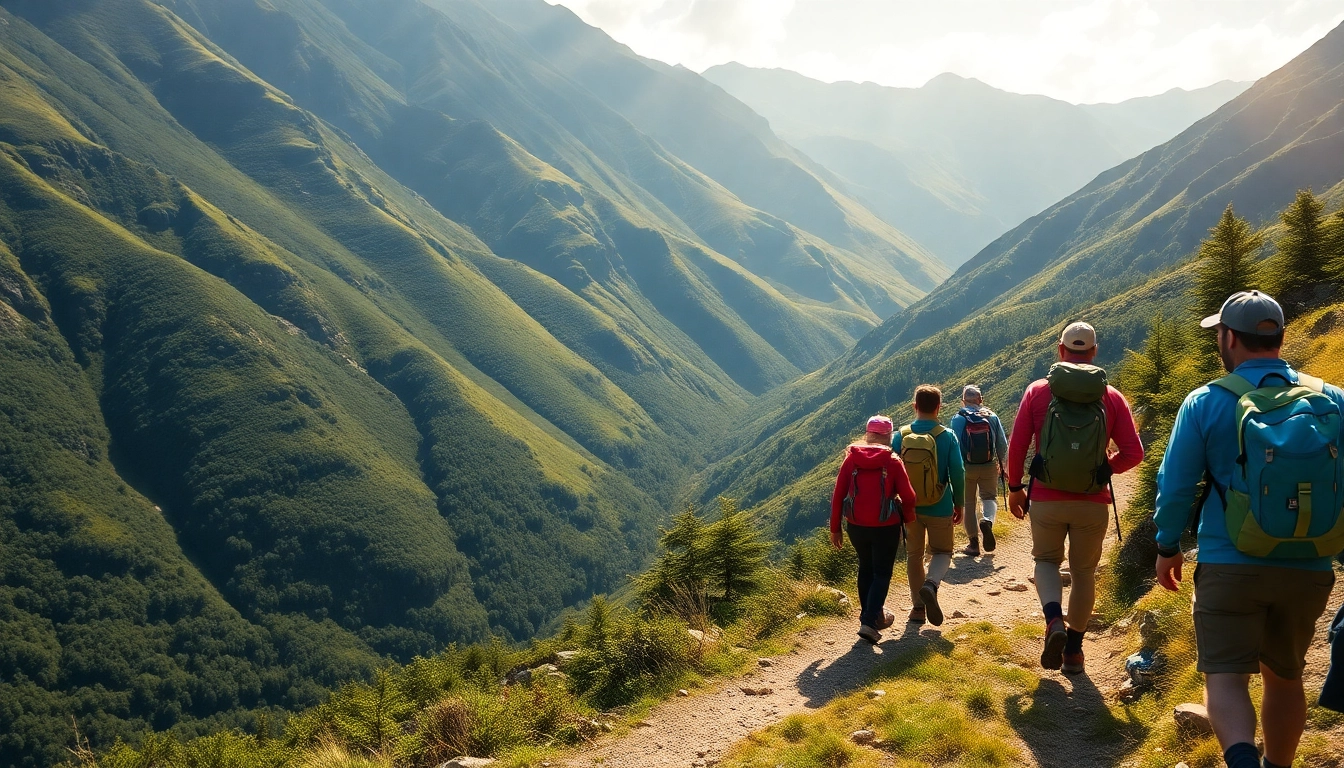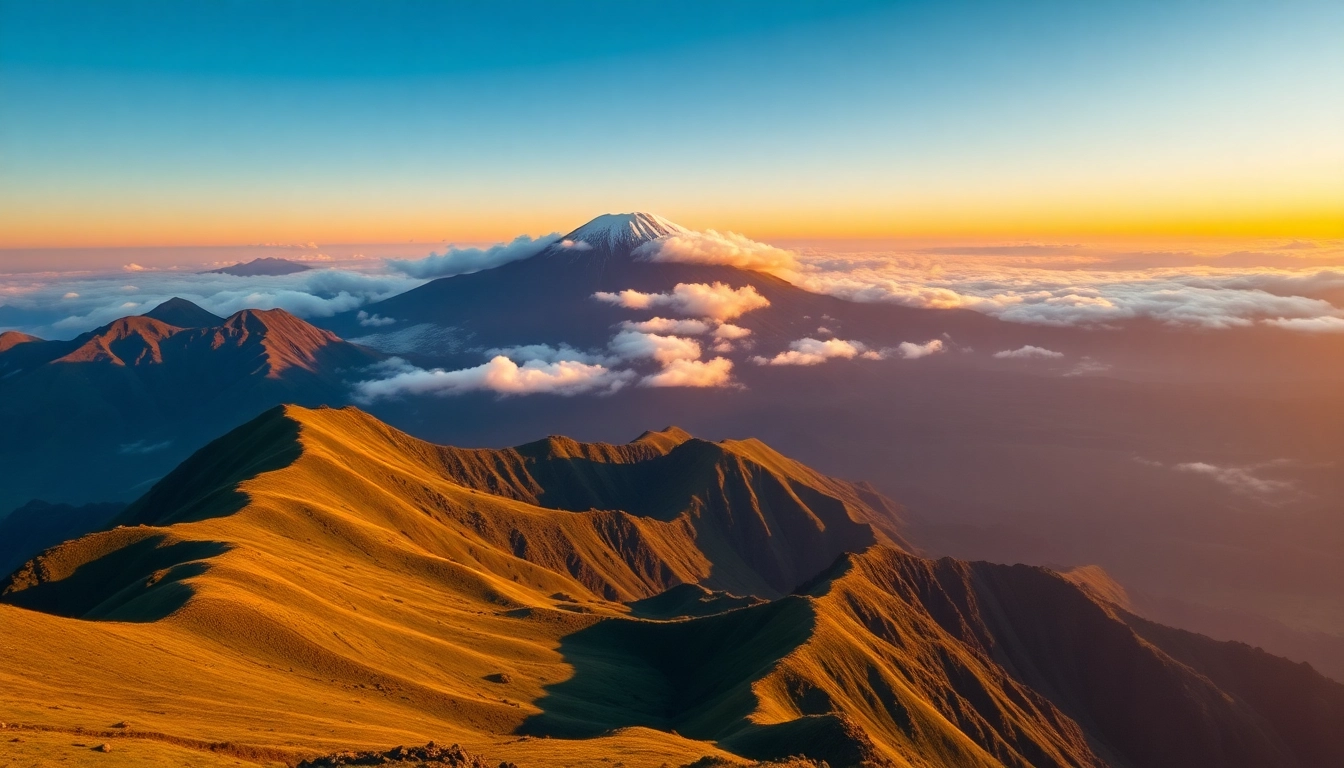
Understanding Hiking and Its Benefits in Indonesia
Hiking has become a sought-after outdoor activity for adventure enthusiasts, nature lovers, and health-conscious individuals alike. In Indonesia, with its rich tapestry of diverse landscapes—from lush rainforests and volcanic mountains to pristine beaches—hiking offers unparalleled opportunities to explore the country’s natural beauty while reaping numerous health benefits. Whether you’re a seasoned trekker or a casual walker, understanding what hiking entails and how it can positively influence your physical and mental well-being is essential to making the most of this activity. For those looking to start their journey, it’s important to explore the fundamental aspects of hiking, its unique appeal in Indonesian terrains, and the significant benefits it can bring to your life.
To begin, consider visiting hiking destinations across Indonesia. From the scenic trails of Mount Rinjani in Lombok to the mystical jungles of Bukit Tiga Puluh in Sumatra, each trail offers a distinctive experience that highlights Indonesia’s breathtaking landscapes. Engaging in hiking in such settings not only promotes physical health but also nurtures mental clarity, stress relief, and a deep connection with nature.
Planning Your Hiking Adventure: Tips and Preparation
2.1 Selecting the Right Trails and Difficulty Levels
The first step in any successful hike is choosing the appropriate trail that aligns with your experience level and fitness. Indonesia offers a broad spectrum of hiking routes—from easy, beginner-friendly paths in community parks to challenging multi-day treks up active volcanoes like Mount Bromo or Mount Rinjani. Beginners should start with well-marked, flat trails that feature scenic views without excessive elevation gain, gradually building stamina and confidence. Advanced hikers may seek out rugged terrains such as jungle expeditions or high-altitude climbs, which demand technical skills and proper preparation.
2.2 Essential Gear and Safety Equipment for Indonesian Terrain
Proper equipment is fundamental to ensuring safety and comfort during hikes. In Indonesia’s tropical climate, lightweight, moisture-wicking clothing, wide-brimmed hats, and sunglasses are essential to protect against sun exposure. Sturdy hiking boots with good grip are vital for navigating uneven or slippery terrain. Carrying a reliable backpack with a hydration system ensures adequate water intake, especially in remote areas where freshwater sources may be scarce. Additional safety gear includes a first-aid kit, insect repellent, sunblock, and a map or GPS device. For hikes on volcanoes or dense jungles, consider carrying trekking poles, headlamps, and emergency communication devices.
2.3 Best Practices for Environmental Conservation
Preserving Indonesia’s natural beauty is a collective responsibility. Practice Leave No Trace principles by carrying out all trash, staying on designated trails, and avoiding disturbance to wildlife and plant life. Respect local cultures and customs, particularly when passing through indigenous communities. Support eco-friendly initiatives by hiring local guides who promote sustainable tourism. Educating oneself about the environment and adhering to park regulations help ensure that Indonesia’s pristine landscapes remain intact for future generations.
Top Hiking Trails in Indonesia for Different Levels
3.1 Beginner-Friendly Routes and Easy Hikes
For newcomers to hiking, Indonesia offers many accessible trails that allow a relaxed immersion into outdoor activities. The Sekumpul Waterfall Trail in Bali, for example, provides a gentle walk through rice terraces culminating in a scenic waterfall view. Similarly, the Mangrove Forest Walk in Bali Barat National Park offers an easy stroll through lush mangroves with opportunities for birdwatching and appreciating coastal ecosystems. These routes serve as a perfect introduction for those wanting to experience Indonesia’s natural environment without strenuous exertion.
3.2 Moderate Trails with Scenic Views
As hikers gain confidence, they can explore trails that combine moderate difficulty with stunning scenery. In Java, the Papandayan Volcano offers a relatively accessible route featuring volcanic craters and mineral lakes, ideal for intermediate hikers. The Ijen Crater trek, famous for its surreal blue flames and sulfur mines, presents a challenging yet rewarding experience suitable for active hikers seeking adventure. These trails often involve some elevation gain and uneven terrain but are well-suited for those with baseline fitness looking to push their limits.
3.3 Advanced Challenges for Experienced Hikers
For the seasoned adventurer, Indonesia hosts some of the most demanding trails in Southeast Asia. Climbing the active Mount Rinjani in Lombok involves multi-day camping, navigation through rugged volcanic terrain, and acclimatization to high altitudes. The Carstensz Pyramid, part of the Sudirman Range in Papua, is regarded as one of the world’s most challenging technical climbs, requiring specialized equipment and skills. These advanced routes attract avid explorers seeking extreme physical exertion, technical mastery, and the thrill of conquering formidable natural features.
Enhancing Your Hiking Experience with Local Culture and Tips
4.1 Local Guides and Cultural Insights
Engaging local guides enriches the hiking experience by providing deep cultural insights, language assistance, and safety. Many local guides are well-versed in the history, traditions, and ecological significance of the regions they serve. Their knowledge can help uncover hidden gems along trails, introduce you to indigenous customs, and ensure respectful interaction with communities. Supporting local guides also promotes sustainable tourism and economic development in remote areas.
4.2 Packing Tips for Durability and Comfort
Proper packing is crucial to ensure comfort and safety during hikes in Indonesia’s diverse environments. Pack lightweight, moisture-wicking clothing, and versatile layers to adapt to changing weather. Durable footwear suited for rocky or muddy trails prevents injuries. Small essentials such as a multi-tool, spare batteries, and energy snacks provide additional convenience. Always carry a waterproof bag to protect electronics and valuables, especially during sudden tropical downpours.
4.3 Overcoming Common Challenges in Indonesian Hikes
Hikers often encounter challenges such as unpredictable weather, challenging terrain, and limited access to amenities. Preparation mitigates these issues—check weather forecasts, plan routes accordingly, and carry sufficient supplies. In remote areas, navigation skills are vital; using offline maps or GPS devices helps prevent getting lost. Adapting to altitude sickness at higher elevations requires gradual acclimatization. Patience, flexibility, and respecting local advice ensure a safe and enjoyable adventure.
Tracking Progress and Staying Motivated
5.1 Using Apps and Tools for Trail Navigation
Technological tools significantly enhance hiking experiences. Smartphone apps like AllTrails, Gaia GPS, or local Indonesia-specific apps offer trail maps, elevation profiles, and user reviews. Many apps allow offline access, crucial in areas with limited network coverage. Wearable devices monitoring fitness metrics can motivate progress, track distance, and calculate calories burned, providing tangible goals to aim for.
5.2 Setting Goals and Celebrating Milestones
Establishing clear, achievable goals keeps motivation high. Beginners might aim to complete a certain trail within a specific timeframe, while experienced hikers may set targets like summiting multiple peaks or increasing daily distance. Celebrating milestones—such as completing a challenging climb or visiting a new region—creates a sense of achievement and encourages continuous participation.
5.3 Sharing Your Hiking Stories to Inspire Others
Sharing experiences through social media, blogs, or local communities fosters inspiration and motivates others to explore hiking. Documenting journeys with photos, videos, and reflections enhances your own appreciation while inviting feedback and encouragement. Connecting with fellow hikers can lead to new friendships, trail recommendations, and collaborative adventures, building a vibrant outdoor community in Indonesia.



